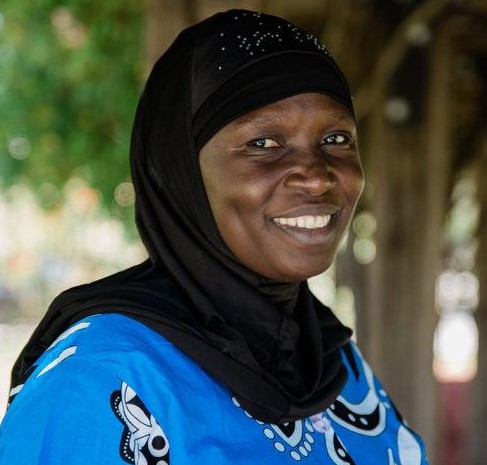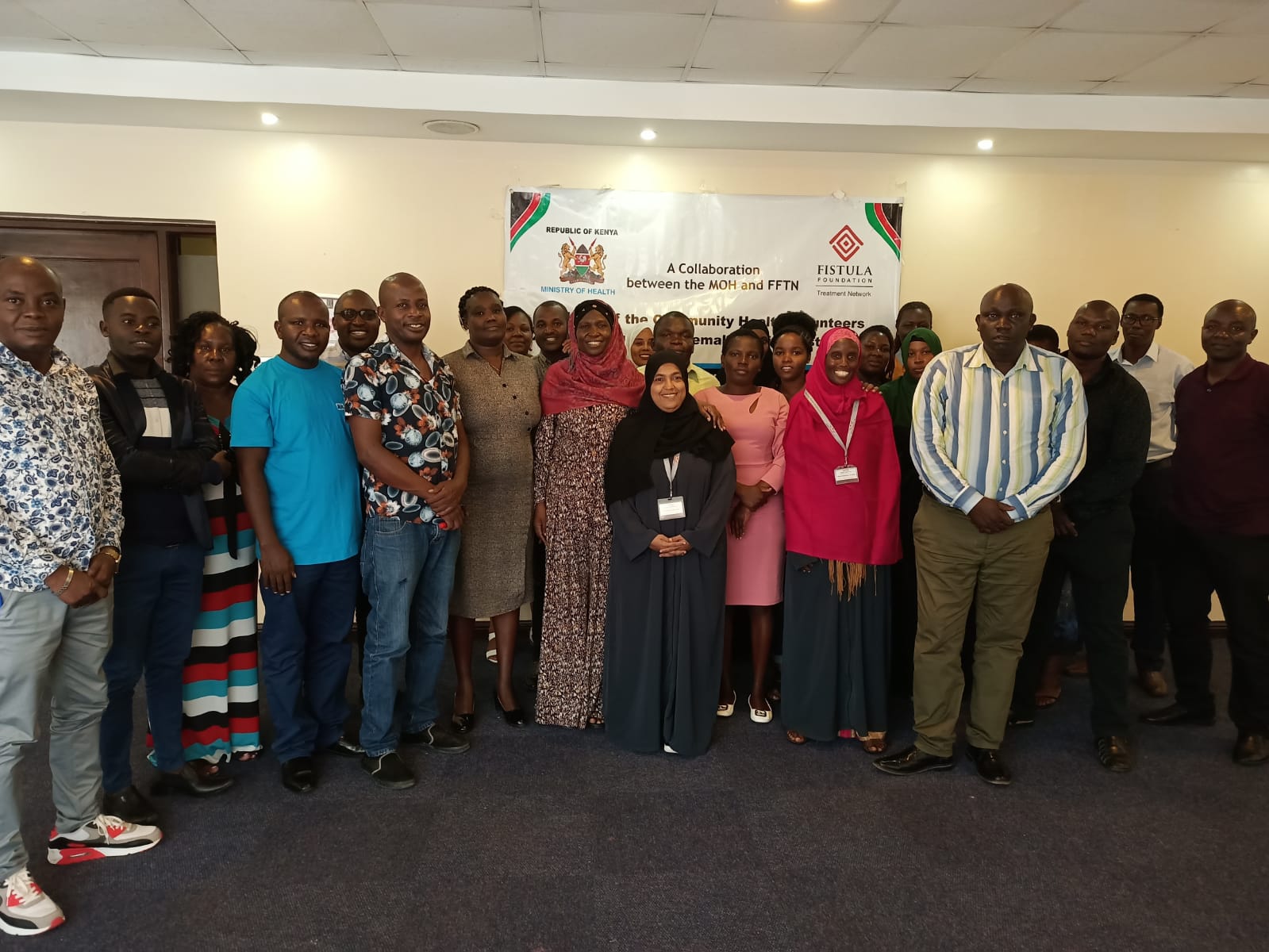|
Getting your Trinity Audio player ready...
|
By Waihenya Henry
Nairobi, Kenya: Eighteen-year-old Mary Nafula Simiyu has no regret about the ordeal a man subjected her to nearly eight years ago and the consequences of being raped.
The fistula survivor who is now fully recovered after she underwent surgery courtesy of the Fistula Foundation remembers the misfortune as if it happened yesterday flashes back:
In the year 2015 when I was in class six my mother had gone to work so that we can get our daily bread. I was alone at home, a strange man came from nowhere and raped me, and I did not recognize him.”
She continues: “
After some time I started passing urine continuously through the birth canal and I was unable to control it, I had also a strong and bad smell which was associated with the leaking”
At that point, Mary dropped out of school I was not going to school. She had difficulty walking.
Mary recovered. Determined to pursue her education, a visit to Women and Development against Distress in Africa (WADADIA) paved the way towards achieving her dreams.
She becomes emotional about her tribulations – on the day she received surgery and later got educational support to continue with higher education- secondary school level.
Regional director, of programs for Africa and Asia, fistula foundation and chief executive officer of WADADIA, Habiba C.N. Mohamed says the latter undertook to pay secondary school fees for Mary.
Early marriage is a major contributor to obstetric fistula among other factors such as type three and four female genital mutilation, lack of antenatal care services, and skilled delivery.

“Women and girls with fistula are both physically emotionally and economically affected. The condition leads to family breakup, loss of employment, school dropout, mental health issues including anxiety and depression,” says fistula foundation r and regional director, programs for Africa and Asia and WADADIA chief executive officer Habiba C.N. Mohamed
WADADIA has a comprehensive reintegration program that addresses most of the fistula survivors’ psychosocial issues to ensure they attain holistic recovery.
Obstetric fistula is a childbirth injury that occurs when a woman has a
prolonged, obstructed labor but is unable to access emergency obstetric care.
As a result, the woman can develop a fistula—a hole between her
vagina and her bladder or rectum, says Habiba as the world on May 23 marked world fistula day.
UNFPA leads the global Campaign to End Fistula, a drive to transform the lives of vulnerable women and girls.
The 20-year-old campaign represents a global commitment to fistula prevention and holistic treatment, including surgical repair and social reintegration and rehabilitation.
Despite progress, elimination by 2030 demands accelerated action.To that end, the theme for the international day this year is “20 years on – progress but not enough! Act now to end fistula by 2030!”
According to a fistula nurse Andrew Kelvin Rutto, perineal tears are another type of childbirth injury, similar to fistula. If left untreated, a fistula or perennial tear will cause a woman to leak urine, stool, or both for the rest of her life.
At least one million women suffer needlessly from these devastating
Conditions across sub-Saharan Africa and Asia says Rutto. “
The only cure for either condition is surgery.
Myths
Habiba describes Mary as bold in character for having opened up to her condition unlike the majority of women”
“It’s important due to the myths and misconceptions associated with the condition, women with fistula rarely come out to seek services on their own.
She says it takes time and resources to first reach them at the household level and second convince them that they have a medical condition that is both treatable and preventable before you can refer them for services.
Dr Daisy Ruto who has been at the helm of Obstetric Fistula at Jhpiego Kenya, notes some of the women have been shunned and stigmatised to the extent of losing social skills.
“They will need a counselor to improve their mental health and support their integration back into society,” says Dr Ruto.
Habiba names ten counties that lead in the number of fistula cases.
These by last year were Bungoma, Narok, Homabay, Uasin Gishu, Tranzoia, Kakamega, West Pokot, Kisii, Garissa, and Kisumu.
“The order keeps changing almost every two years, demonstrating that the number of cases seen in a region is a reflection of the level of investment and interventions and not necessarily an indication of fistula prevalence.
On fistula day, Fistula Foundation engaged in a series of sensitization events in their respective communities, this climaxed with public events, fistula screening exercises, and routine treatment in our centers.
Obstetric fistula is a severe maternal morbidity that can affect any woman or girl who suffers from prolonged or obstructed labour without timely access to an emergency Caesarean section.

It is one of the most devastating consequences of neglected childbirth and a stark example of health inequity in the world.
Although obstetric fistula has been eliminated in industrialized countries, it continues to afflict the most impoverished women and girls in the developing world, mainly those in rural and remote areas.
The Ministry of Health estimated 3,000 cases of obstetric fistula in the country annually, with approximately one to two fistulae for every 1,000 deliveries.
Corrective surgeries are the only treatment to cure the incontinence that a fistula causes.
MoH also estimates that there are 24,000 women living with obstetric fistula in Kenya yet, as little as 2,000 received treatments in 2021, according to data from the Global Fistula Map.
Nearly 2,500 seek care annually and only three in ten get the surgery resulting in a backlog, partly due to a lack of trained surgeons.
Kenya only has ten trained surgeons with specialized skills for fistula repair.
The World Health Organization (WHO) estimates that every year, Kenya records 3,000 new cases of obstetric fistula—a chronic disability that has severe physical, psychological, social, and economic consequences on women.
Despite it being preventable and treatable, only 1,000 fistula surgeries (less than half of the cases) are done in Kenya yearly,” according to Pumwani Hospital baed Dr. Kamau Kinya
Due to the increased cost of living, only 7.5 percent of girls and women can access fistula-related medical care, including surgery, at around $60 (Sh7,000).
Furthermore, less than 10 percent of health facilities in the country can offer basic emergency obstetric care, and only six percent comprehensive emergency obstetric care.
The ‘Fistula Belt’ is, therefore, synonymous with counties with high levels of poverty, insufficient infrastructure, lack of specialized workforce, poor referral networks, and over-reliance on donor support. Women and girls hence live with the debilitating experiences of constant leaking of urine and/or faeces and the indignity of severe stigma and isolation.
Fistula, an injury caused by long, painful obstructed labour and the leading cause of disability during childbirth, calls for a multi-pronged approach, notes Dr. Kamau.
That entails strengthening primary health care, expansion of fistula treatment networks, and post-repair support through multi-sectoral partnership, political goodwill, and action for the patients.
To address maternal mortality and morbidity, the government has in place strategies, policies, and guidelines aimed at ending fistula by 2030. With the devolution of health functions, therefore, the implementation of these policies lies squarely on the shoulders of the county leadership.
Studies show regional fistula treatment networks are effective in increasing awareness and access to fistula care services, reducing stigma, and enhancing post-operative follow-up and reintegration support.
But such networks only thrive in the backdrop of solid implementation frameworks that strengthen a people-centered approach to healthcare.
Fact file
Each year between 50 000 to 100 000 women worldwide are affected by obstetric fistula, an abnormal opening between a woman’s genital tract and her urinary tract or rectum.
In sub-Saharan Africa, the average prevalence of obstetric fistula awareness was 37.9 percent, ranging from 12.8 percent in Gambia to 63.9 percent in Uganda.2 Aug 2022.
The true prevalence of anal fistulas is unknown, as anorectal discomfort is often attributed to symptomatic hemorrhoids. The incidence of an anal fistula developing from an anal abscess ranges from 15 to 38 percent.
In Kenya Obstetric fistula is a devastating childbirth injury primarily caused by prolonged obstructed labor combined with a lack of access to emergency obstetric care, specifically a timely cesarean section.
Fistula corrective repair surgery, when heavily subsidized, costs about 30,000 Kshs (about US$375) at the main referral hospital, Kenyatta National Hospital (KNH) in Nairobi, which is prohibitive for many of those affected.19 Jul 2010.













